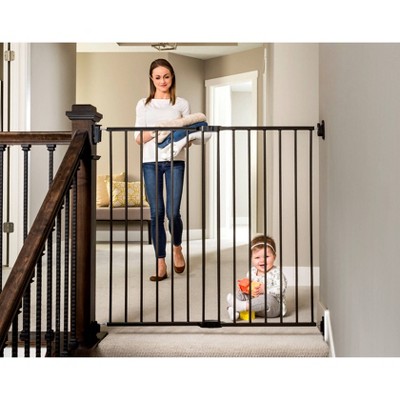Baby Gates for Stairs: A Comprehensive Guide for Safety and Peace of Mind
As a parent, ensuring the safety of your little one is paramount. Baby gates play a crucial role in safeguarding your child from potential hazards, particularly when it comes to stairs. With a wide range of options available, choosing the right baby gate for stairs can be overwhelming. This comprehensive guide will provide you with all the essential information you need to make an informed decision and create a safe environment for your precious child.
Understanding the Importance of Baby Gates for Stairs
Stairs pose a significant risk to toddlers and young children. Their natural curiosity and lack of coordination can lead to falls, which can result in serious injuries. Baby gates act as a physical barrier, preventing children from accessing stairs unsupervised. They provide peace of mind for parents, allowing them to move freely around the house without constantly worrying about their child’s safety.
Types of Baby Gates for Stairs
There are several types of baby gates available, each with its own advantages and disadvantages. Here are the most common options:
-
Pressure-Mounted Gates: These gates are installed by applying pressure between the walls or door frame. They are easy to install and remove, making them ideal for temporary use or for situations where drilling is not possible. However, they may not be as secure as other types of gates.
-
Hardware-Mounted Gates: These gates are permanently attached to the wall or door frame using screws or bolts. They provide a more secure and stable barrier than pressure-mounted gates. However, they require drilling and may not be suitable for all homes.
-
Retractable Gates: These gates can be retracted when not in use, making them a convenient option for areas where space is limited. They are typically hardware-mounted and offer a high level of security.
-
Walk-Through Gates: These gates feature a door that allows adults to pass through while keeping children contained. They are ideal for areas where frequent access is required, such as kitchens or living rooms.
Choosing the Right Baby Gate for Stairs
When selecting a baby gate for stairs, consider the following factors:
-
Height: The gate should be tall enough to prevent your child from climbing over it. Look for gates that are at least 24 inches high.
-
Width: The gate should be wide enough to cover the entire opening of the stairs. Measure the width of the opening before purchasing a gate.
-
Material: Baby gates are typically made of wood, metal, or plastic. Choose a material that is durable and easy to clean.
-
Safety Features: Look for gates with safety features such as self-closing mechanisms, double-locking systems, and anti-tip designs.
-
Ease of Use: The gate should be easy to open and close for adults, but difficult for children to operate.
Installing and Using Baby Gates for Stairs
Once you have chosen a baby gate, it is important to install it correctly to ensure its effectiveness. Follow the manufacturer’s instructions carefully. Here are some general guidelines:
-
Pressure-Mounted Gates: Adjust the gate to fit snugly between the walls or door frame. Ensure that there is no gap between the gate and the surface.
-
Hardware-Mounted Gates: Drill holes into the wall or door frame and secure the gate using screws or bolts. Tighten the screws or bolts securely.
-
Retractable Gates: Install the gate according to the manufacturer’s instructions. Ensure that the gate is securely attached to the wall or door frame.
-
Walk-Through Gates: Install the gate according to the manufacturer’s instructions. Ensure that the door opens and closes smoothly.
Maintenance and Safety Tips
To ensure the continued safety and effectiveness of your baby gate, follow these maintenance and safety tips:
-
Inspect the gate regularly: Check for any signs of damage or wear and tear. Tighten any loose screws or bolts.
-
Clean the gate: Wipe down the gate with a damp cloth to remove dirt and debris.
-
Keep the gate closed when not in use: This will prevent children from accidentally opening the gate and accessing the stairs.
-
Never leave your child unattended near the stairs: Even with a baby gate in place, it is important to supervise your child when they are near the stairs.
Conclusion
Baby gates for stairs are an essential safety measure for homes with young children. By choosing the right gate and installing it correctly, you can create a safe environment for your child and enjoy peace of mind. Remember to inspect and maintain the gate regularly to ensure its continued effectiveness. With a baby gate in place, you can rest assured that your child is protected from the potential hazards of stairs.

